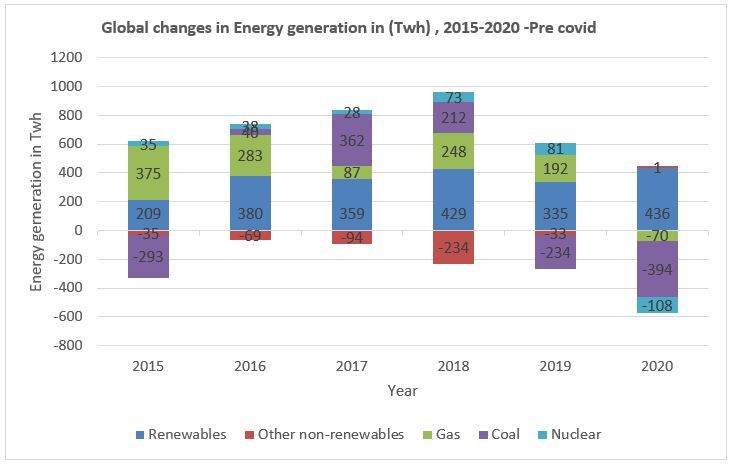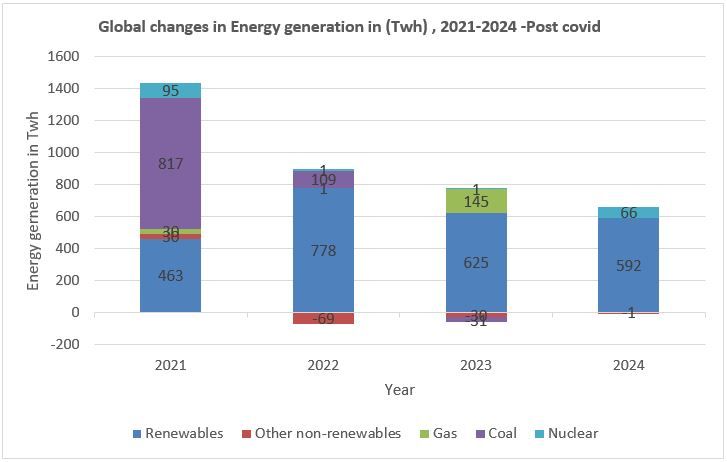Unlocking the Potential of Energy Markets: Strategies for Sustainable Growth and Innovation
Energy market is one of the fastest growing and a complicated sector which is playing a significant role in global economy. The energy market, which can relate to the electrical energy market or other energy resources, is essentially a market handling procedure with a focus on the trading and provision of energy. The following are the two main categories of energy:

As per the Global Industry Classification Standard (GICS), the energy sector is further divided into the oil, gas & consumable fuels industry and the energy equipment & services industry

• As per the graph, the renewables sources used for generating energy will grow by almost 7% in 2020.
• The global energy demand is set to by decline 5% – but long-term contracts, also priority access to the grid and the continuous installation of new plants are all underpinning robust growth in renewable electricity.
• The net result is an overall increase of 1% in renewable energy demand in 2020.
• As per the forecast 2022-2024, an average annual electricity demand growth of 2.7% with growing renewables almost matching this moderate demand growth
Post Covid energy generation

• The energy sector is highly sensitive and cyclical to the macroeconomic environment. The level of economic activities has a significant impact on the demands for the oil and gas.
• Employment, GDP, disposable income, housing, and the industrial production index are the key major macroeconomic drivers.
• An increasing amount of business activities and production during the expansion periods also inflates the demand and price of oil.
• During recessions, the decreasing production levels leads to the lowering of the demand and price, and thus results in weakening of the sector.
Along with the economic conditions, the natural weather and seasons also have an impact on the energy sector. The Gas prices are usually higher during the summer than in the winter. This is partially due to more traveling during the summer, and partially due to higher production costs for the summer-grade fuels. Also, the severe weather conditions and natural disasters also can damage the infrastructure and leads to disrupt in the supply of energy.
A major structural change in the electricity generation around the world
The clean energy transition is one of the things which is bringing a great structural change in generation profile of the electricity systems around the world. The Variable renewable generation has already surged over the last decade, which is driven by the cost reductions and also the favorable environments policy. Also meanwhile, the conventional power plants, notably those using coal, nuclear and hydro, are stagnating or in decline. While the proper policies can also ensure the reliable energy access during the transition period, the diffuse and decentralized nature of much renewable generation raises the risk of cyberattacks and many other clean energy technologies that rely on metals and minerals which are in tight supply or whose productions are dominated by a limited number of nations.
Conclusion The energy efficiency progress recovers in 2021 but needs to double for net zero by 2050.In 2021, global energy intensity is a key measure of the economy’s energy efficiency and is expected to improve by 1.9% after improving by only 0.5% in 2020 and also over the past five years, energy intensity has improved on an average by 1.3% a year, down from 2.3% between the year 2011 and 2016, and also well below the 4% described in the Net Zero Emissions by 2050 scenario over 2020-2030
